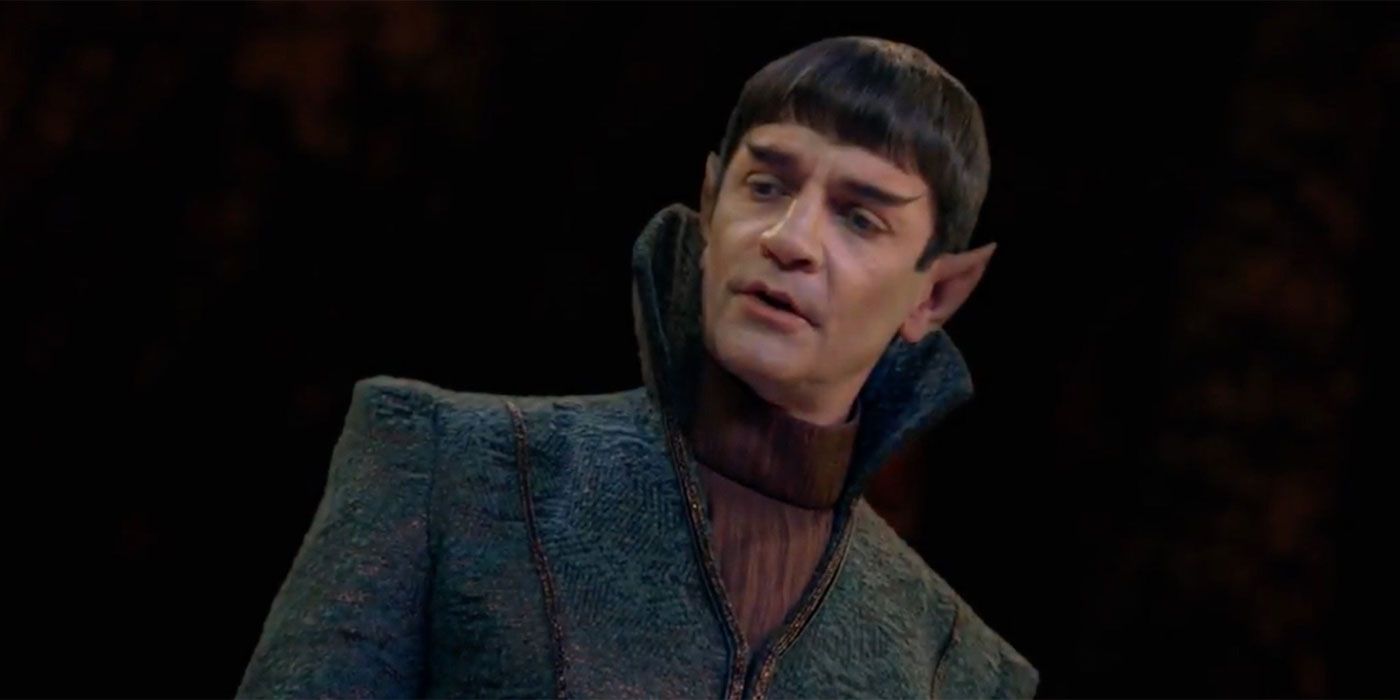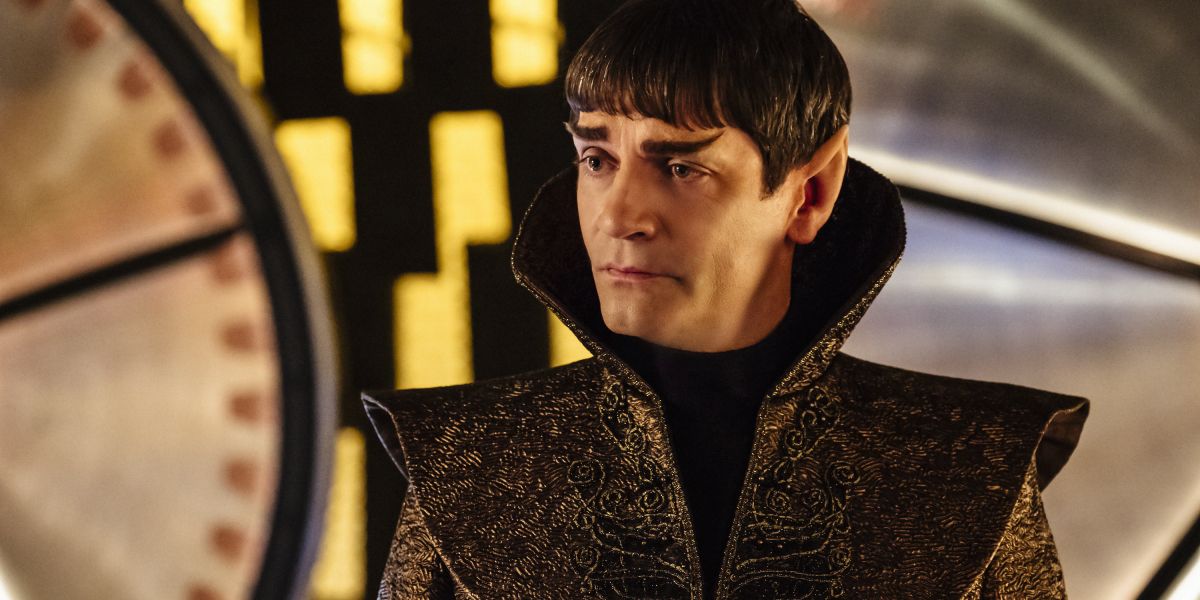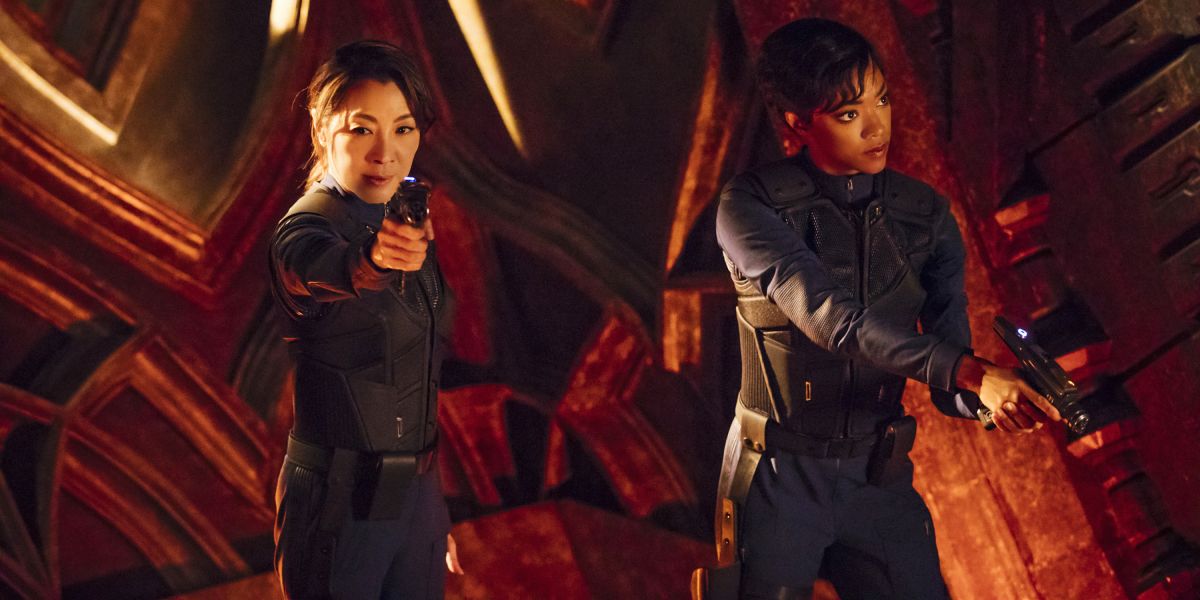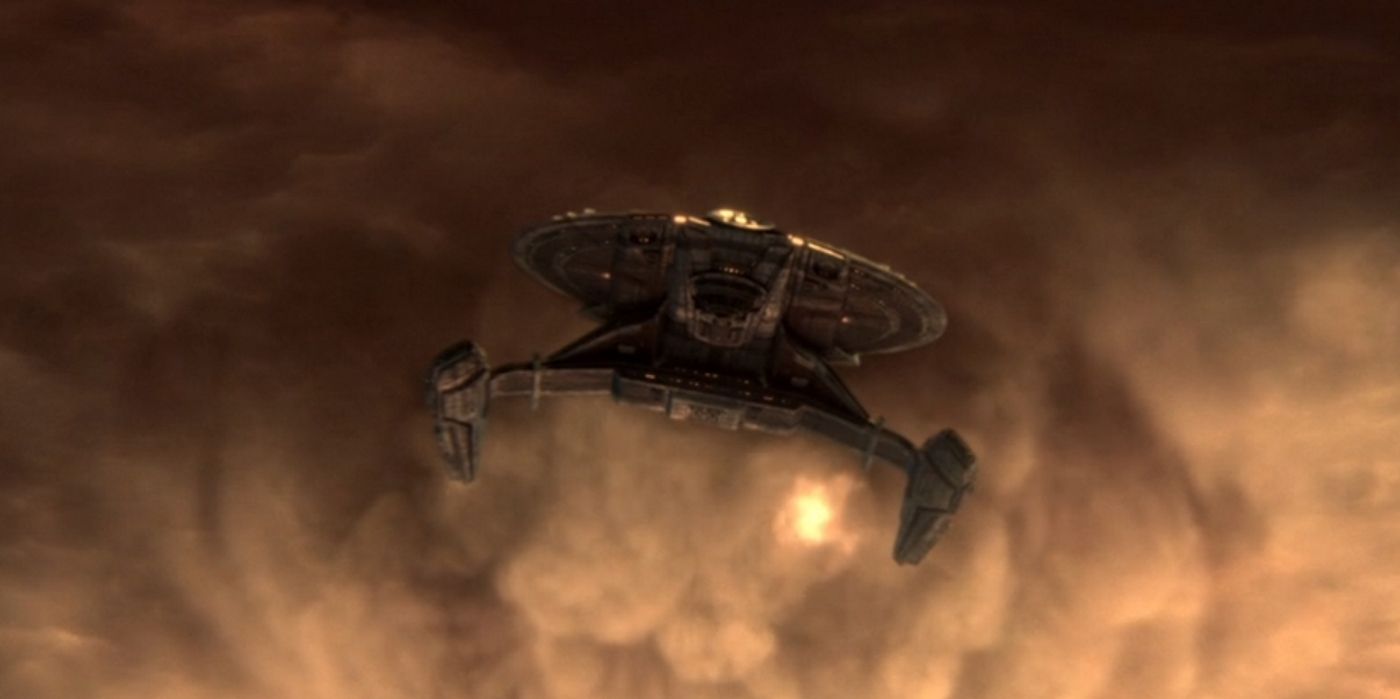Whether fans loved Star Trek: Discovery for bringing JJ Abrams' Trek movie aesthetics to television or want to take it to task for all of its divergences to established Star Trek canon, it can at least be said that the creative team behind Discovery did their Trek homework. Discovery was initially created by Bryan Fuller, who wrote for Star Trek: Deep Space Nine and Star Trek: Voyager, and left the project over creative differences with CBS president Les Moonves. Alex Kurtzman, who co-wrote J.J. Abrams' Star Trek and Star Trek Into Darkness, shares a 'Created By' credit for Discovery with Fuller, and also serves as the series' executive producer, along with showrunners Gretchen J. Berg and Aaron Harberts (Pushing Daisies). Judging by Discovery's first two episodes, "The Vulcan Hello" and "Battle at the Binary Stars," the series' creative team knows their Trek.Star Trek: Discovery is a prequel set in 2256, roughly 10 years before the original five year mission of Captain James T. Kirk (William Shatner) and the Starship Enterprise in the Original Series. This also makes it a sequel series set about a century after the events of Star Trek: Enterprise commanded by Captain Jonathan Archer (Scott Bakula), which concluded with the founding of the United Federation of Planets. Sprinkled throughout Discovery's premiere episodes are numerous Easter eggs and callbacks to its predecessor Star Trek series and movies.Discovery opened with and heavily emphasized the Klingons. We learn that the Klingon Empire, which has been mired in isolationism and has only made occasional contact with the Federation in the last century, is fractured. The Klingon High Council, comprised of 24 Great Houses, are at war with each other. However, T'Kuvma (Chris Obi), a demagogue, seeks to unite the Great Houses under his rule. T'Kuvma is a lifelong believer in Kahless the Unforgettable, the Klingon's messiah and the greatest warrior in Klingon history, who was the first to unite the Klingon Empire centuries ago. T'Kuvman uses the Beacon of Kahless to summon the 24 Great Houses to him, and styles himself as T'Kuvma the Unforgettable. Kahless was first mentioned in the Original Series episode "The Savage Curtain," but the mythology about Kahless was established in detail in the Worf (Michael Dorn) and Klingon-centric episodes throughout the seven season run of Star Trek: The Next Generation.T'Kuvma and his Klingon followers also seem very religious, especially in the way they honor their dead. T'Kuvma practices the Klingon funeral rites and keeps the crypts of his thousands of dead warriors attached to the sarcophagus ship. As Klingon warriors who die honorably in battle, their souls are guaranteed to enter Sto-Vo-Kor, the Klingon heaven, which is mentioned by T'Kuvma when he uses his ships tractor beams to gather their dead warriors in "Battle at the Binary Stars." Vulcan culture is also extremely prominent in Discovery, embodied by both Ambassador Sarek (James Frain), the father of Spock and the adopted father of Discovery's main character, Commander Michael Burnham (Sonequa Martin-Green). Burnham is the first human to attend the Vulcan Learning Center and the Vulcan Science Academy; we are shown Burnham as a child taking tests in the Vulcan Learning Center in scenes extremely similar to young Spock undergoing the same kind of tests in J.J. Abrams' 2009 Star Trek movie. When faced with the crisis of the U.S.S. Shenzhou coming face to face with T'Kuvma's decloaked Klingon ship, Burnham retires to her quarters to seek advice from Sarek. This harkens to when Spock (Zachary Quinto) contacted the elder Spock (Leonard Nimoy) to ask him how to defeat Khan (Benedict Cumberbatch) in Star Trek Into Darkness. When Burnham is incarcerated in the Shenzhou's brig for mutiny, she communicates with Sarek via their shared telepathic bond; in the past, Sarek had mindmelded with young Burnham and shared his katra (Vulcan soul) with her. A part of Sarek's katra remains with Burnham. Sarek and Captain Jean-Luc Picard (Patrick Stewart) shared a similar mind-meld in Star Trek: The Next Generation when Sarek was dying. The sharing of the Vulcan katra most famously occurred when Spock mind melded with Doctor McCoy (DeForrest Kelley) before sacrificing himself in Star Trek II: The Wrath of Khan. Spock placed his soul in the doctor's mind so that it could later be reunited with Spock's regenerated body at the conclusion of Star Trek III: The Search for Spock. In Discovery, Sarek tells Burnham, regarding her predicament, that he "cannot abide a waste of resources." This echos something Spock told Kirk in The Wrath of Khan: "Commanding a starship is your first, best destiny. Anything else is a waste of material." Like father, like son.When Burnham commits mutiny and turns on the Shenzhou's Captain Philippa Georgiou (Michelle Yeoh), she attacks her with a Vulcan nerve pinch, made famous by Spock throughout the Original Series. However, where Spock could render someone unconscious for hours when he applied the nerve pinch, Georgiou recovered within moments. This is because despite being trained on Vulcan and having knowledge of how to apply pressure to nerves, as a human, Burnham lacks the Vulcan power of touch-telepathy, as well as the Vulcans' superior physical strength. Burnham also describes 'The Vulcan Hello,' which refers to the famous Vulcan hand gesture, but in this case means the Vulcan practice of opening fire when meeting a Klingon vessel.
Vulcan culture is also extremely prominent in Discovery, embodied by both Ambassador Sarek (James Frain), the father of Spock and the adopted father of Discovery's main character, Commander Michael Burnham (Sonequa Martin-Green). Burnham is the first human to attend the Vulcan Learning Center and the Vulcan Science Academy; we are shown Burnham as a child taking tests in the Vulcan Learning Center in scenes extremely similar to young Spock undergoing the same kind of tests in J.J. Abrams' 2009 Star Trek movie. When faced with the crisis of the U.S.S. Shenzhou coming face to face with T'Kuvma's decloaked Klingon ship, Burnham retires to her quarters to seek advice from Sarek. This harkens to when Spock (Zachary Quinto) contacted the elder Spock (Leonard Nimoy) to ask him how to defeat Khan (Benedict Cumberbatch) in Star Trek Into Darkness. When Burnham is incarcerated in the Shenzhou's brig for mutiny, she communicates with Sarek via their shared telepathic bond; in the past, Sarek had mindmelded with young Burnham and shared his katra (Vulcan soul) with her. A part of Sarek's katra remains with Burnham. Sarek and Captain Jean-Luc Picard (Patrick Stewart) shared a similar mind-meld in Star Trek: The Next Generation when Sarek was dying. The sharing of the Vulcan katra most famously occurred when Spock mind melded with Doctor McCoy (DeForrest Kelley) before sacrificing himself in Star Trek II: The Wrath of Khan. Spock placed his soul in the doctor's mind so that it could later be reunited with Spock's regenerated body at the conclusion of Star Trek III: The Search for Spock. In Discovery, Sarek tells Burnham, regarding her predicament, that he "cannot abide a waste of resources." This echos something Spock told Kirk in The Wrath of Khan: "Commanding a starship is your first, best destiny. Anything else is a waste of material." Like father, like son.When Burnham commits mutiny and turns on the Shenzhou's Captain Philippa Georgiou (Michelle Yeoh), she attacks her with a Vulcan nerve pinch, made famous by Spock throughout the Original Series. However, where Spock could render someone unconscious for hours when he applied the nerve pinch, Georgiou recovered within moments. This is because despite being trained on Vulcan and having knowledge of how to apply pressure to nerves, as a human, Burnham lacks the Vulcan power of touch-telepathy, as well as the Vulcans' superior physical strength. Burnham also describes 'The Vulcan Hello,' which refers to the famous Vulcan hand gesture, but in this case means the Vulcan practice of opening fire when meeting a Klingon vessel.
We first meet Michael Burnham and Captain Georgiou on a desert planet where they are attempting to save a new Star Trek race, the Crepusculans, from an 89 year drought. Georgiou affectionately refers to Burnham as "Number One," a term of respect given to many First Officers by their Captains. The first Number One in Star Trek was portrayed by the future wife of Star Trek's creator Gene Roddenberry, Majel Barrett, in original pilot for Star Trek, 'The Cage'. Barrett's Number One was also the first time a female First Officer was portrayed in Star Trek; Burnham is her successor in this regard. Commander Will Riker (Jonathan Frakes) was also often called "Number One" by Captain Picard on The Next Generation.
While on the Crepusculans' planet, Georgiou and Burnham attempt to free the water trapped under the planet while not making contact with the indigenous race. Burnham refers to Starfleet General Order One - the Prime Directive - which states that "No starship may interfere with the normal development of any alien life or society." Exposing a 'primitive' race to advanced alien technology may alter a planet and civilization's natural development - a big no-no in Star Trek. Of course, the Prime Directive has been violated multiple times in Trek, perhaps most infamously in the opening scenes of Star Trek Into Darkness when Kirk exposed the inhabitants of the planet Nibiru to the sight of the Starship Enterprise.
At the binary star system, Burnham volunteers to don an environmental suit to investigate the Klingon sarcophagus ship. Starfleet Officers leaving their ship to zip around in space in environmental suits occurred in both of the Star Trek films directed by J.J. Abrams and in Star Trek: First Contact when Picard, Worf, and Mr. Hawk (Neal McDonough) walked along the exterior of the Enterprise to battle the Borg. The moment Discovery's outer space scene with Burnham is most likely a homage to, however, is when Spock donned an environmental suit and flew into V-Ger in Star Trek: The Motion Picture.
When several starships arrive at the binary star system to back up the Shenzhou against the assembled Klingon fleet, one of the Starfleet ships is the U.S.S. Shran. Thy'lek Shran was an Andorian enemy, and later ally, of Captain Archer on Star Trek: Enterprise, portrayed by Jeffrey Combs. Combs also played the Vorta(s) known as Weyoun as well as the Ferengi Liquidator Brunt, arch rival of Quark (Armin Shimmerman), on Star Trek: Deep Space Nine. Extra bit of trivia: Combs was also a finalist for the part of Commander Will Riker on Star Trek: The Next Generation before Jonathan Frakes won the role.
Finally, though Starfleet's handheld phasers and communicators are pleasingly similar to those used in The Original Series, many hardcore Trekkers took umbrage to the standout piece of anachronistic technology on Discovery: the hologram projectors Captain Georgiou uses to communicate with Admiral Anderson (Terry Serpico). It is far too early for Starfleet to have holographic technology, according to established Trek canon. Ship-to-ship communication has traditionally been via viewscreens in Trek, and holodecks wouldn't be a staple on starships until the 24th century. The type of holographic tech seen in Discovery wouldn't be introduced until Deep Space Nine used it on board the U.S.S. Defiant during the latter stages of the Dominion War. This is one of many visual clues that Discovery may not be set in the Star Trek Prime timeline, as the producers claim, and may in fact take place in the Abrams movies' Kelvin timeline.
Did you spot more Easter eggs in Star Trek: Discovery's premiere episodes? Let us know in the comments.



